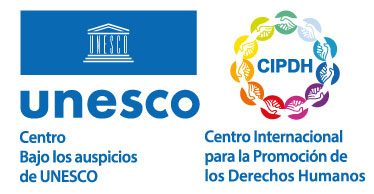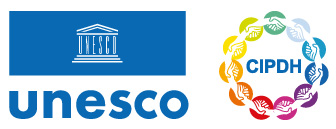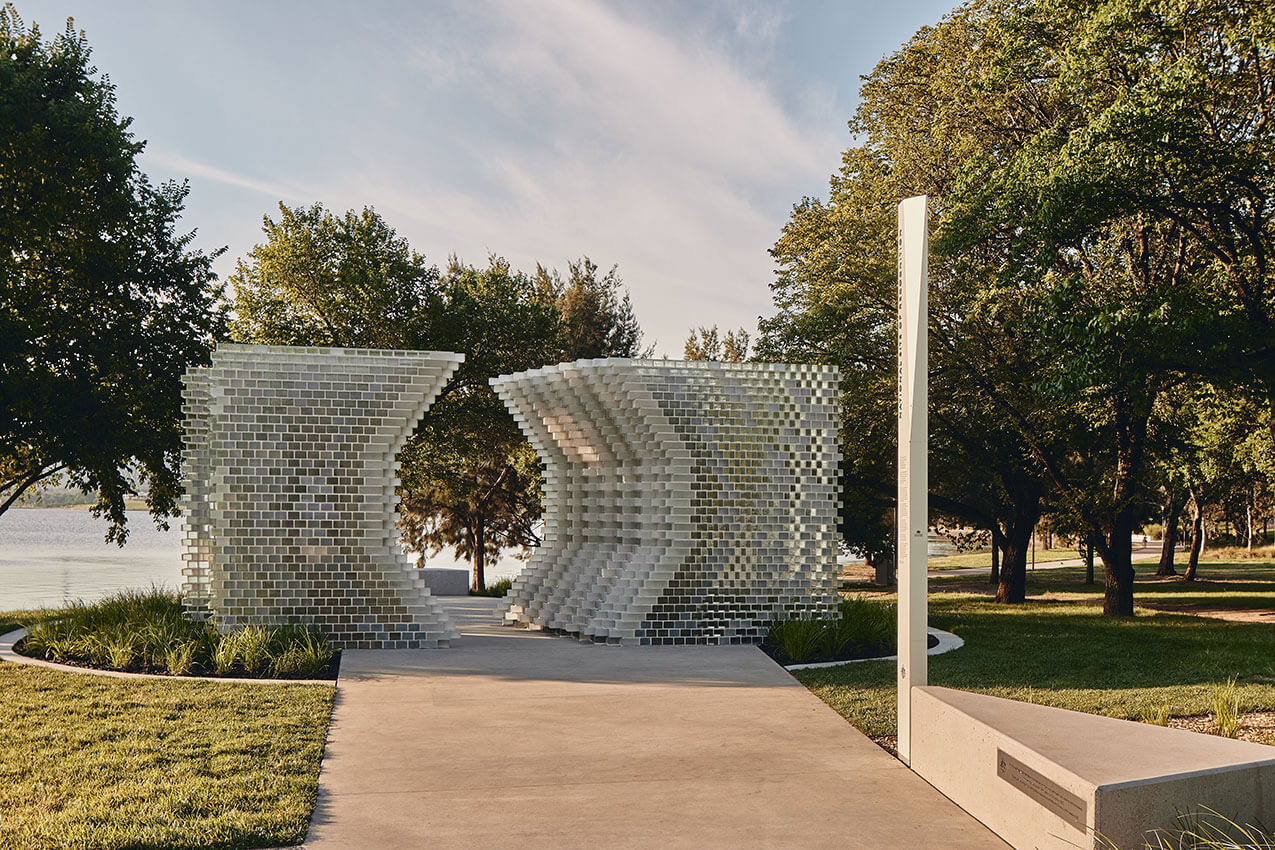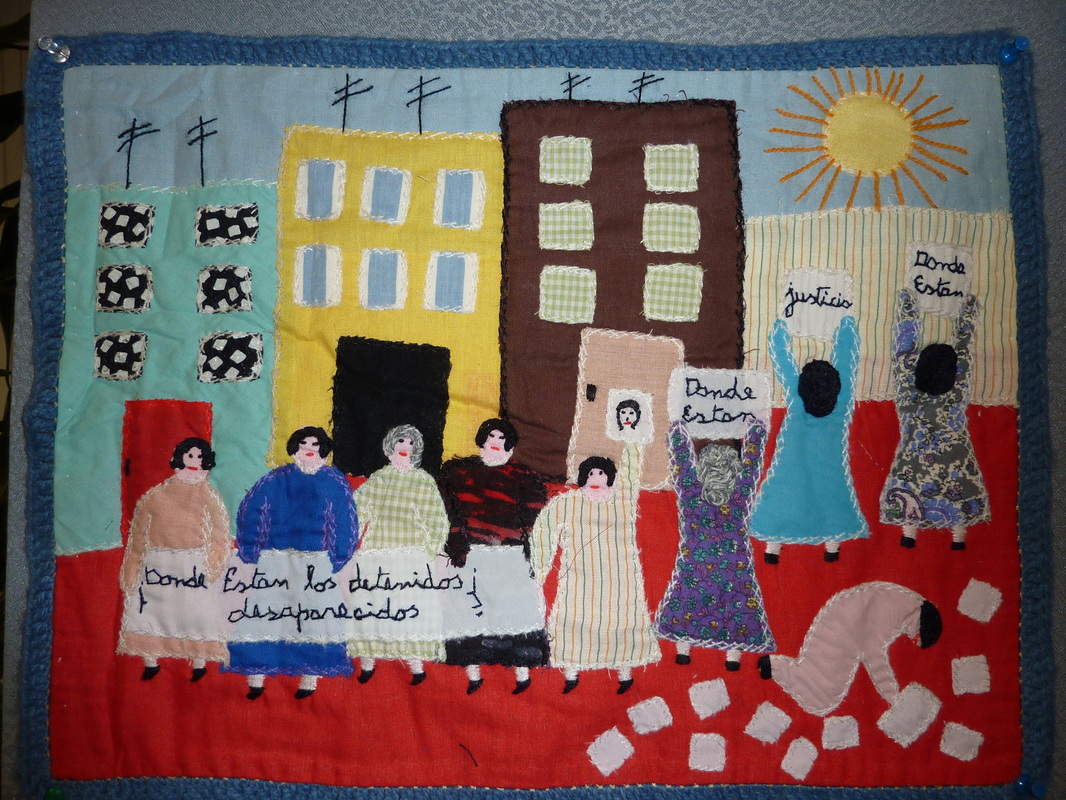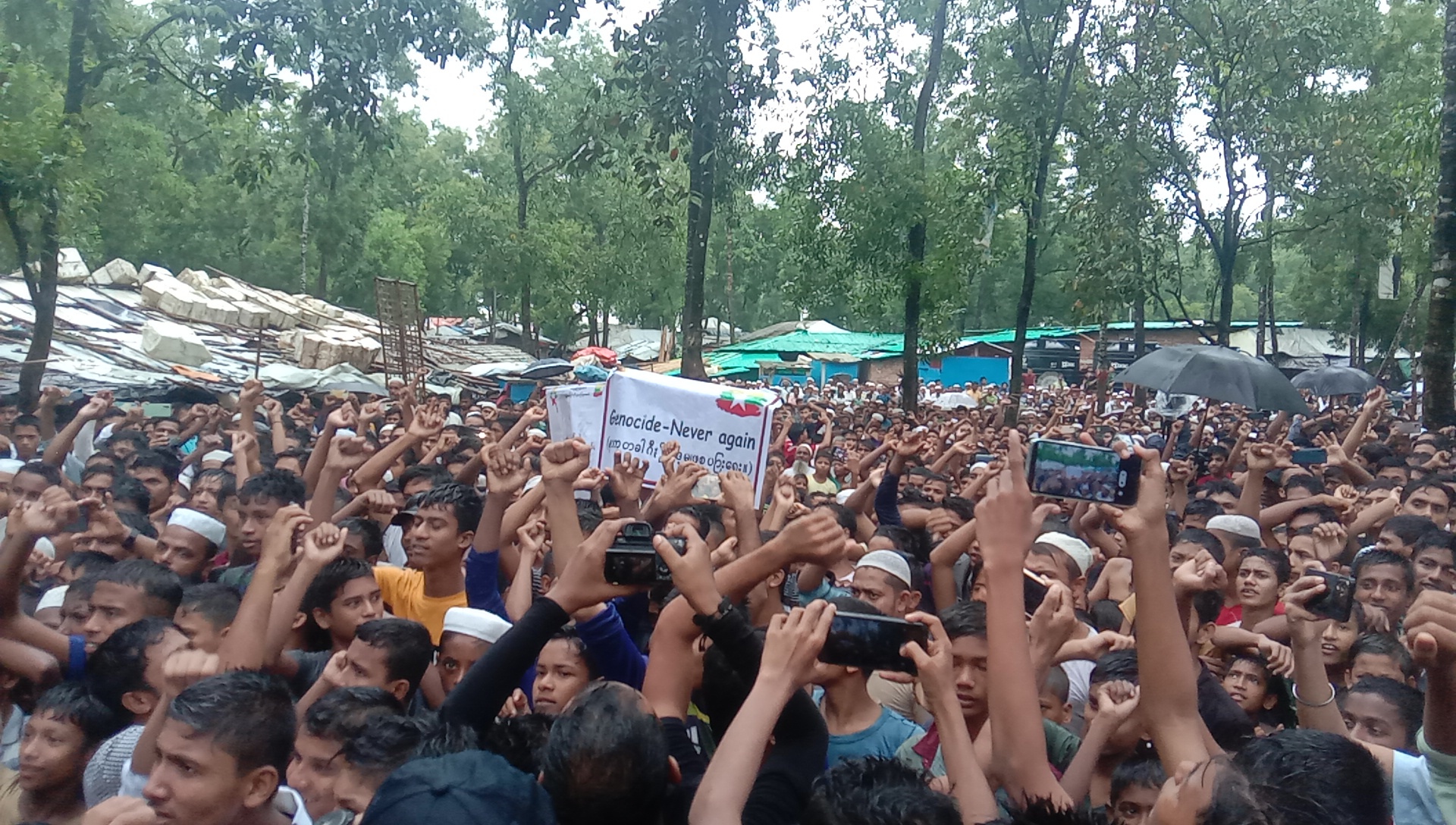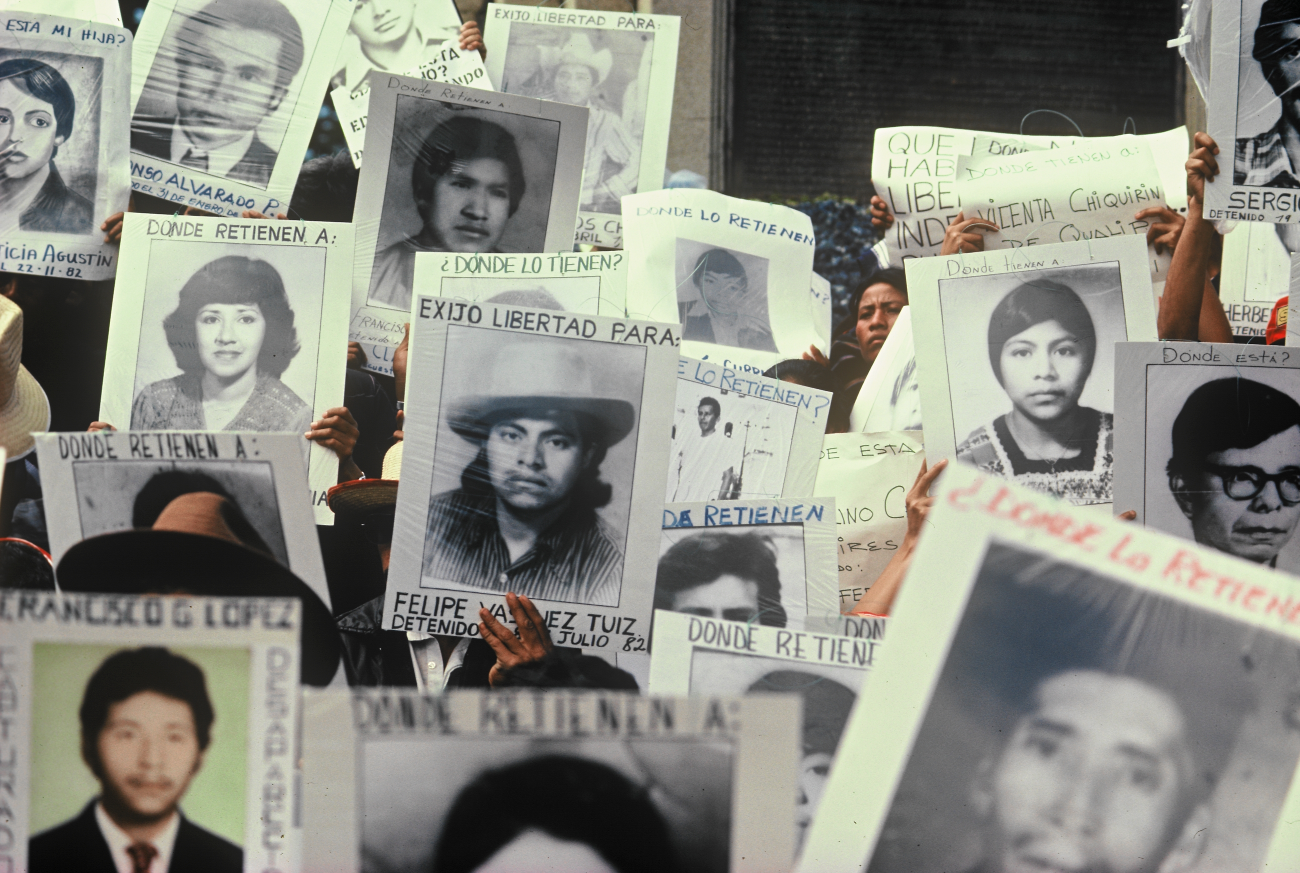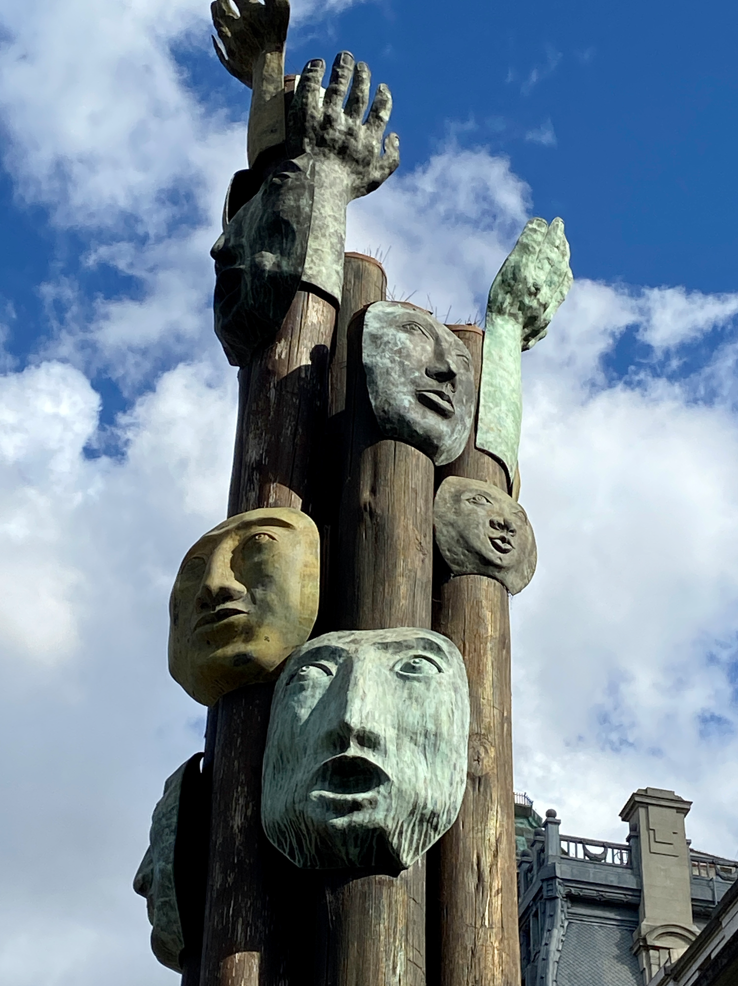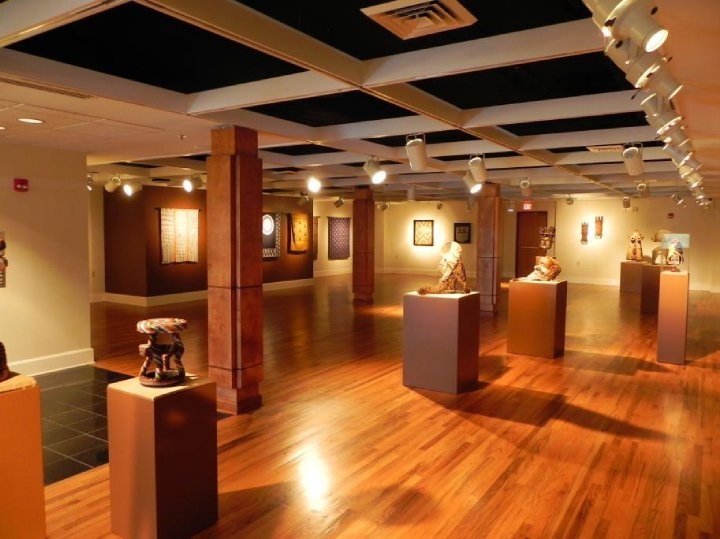The return of Ewuare I
Artistic heritage
Theme: Genocide and/or Mass Crimes

Address
Residence of the Iyase of the Ancestral Kingdom of Benin
Country
Nigeria
City
Benin City
Continent
Africa
Theme: Genocide and/or Mass Crimes
Purpose of Memory
To raise awareness, through its offer to the British Museum in exchange for the original Benin Bronzes, about the survival of the Edo people’s artistic tradition and the cultural plundering concurrent with the massacres and robberies that took place during the British Army’s "punitive expedition" to the Kingdom of Benin in February 1897.
Institutional Designation
The return of Ewuare I
Public Access
Free
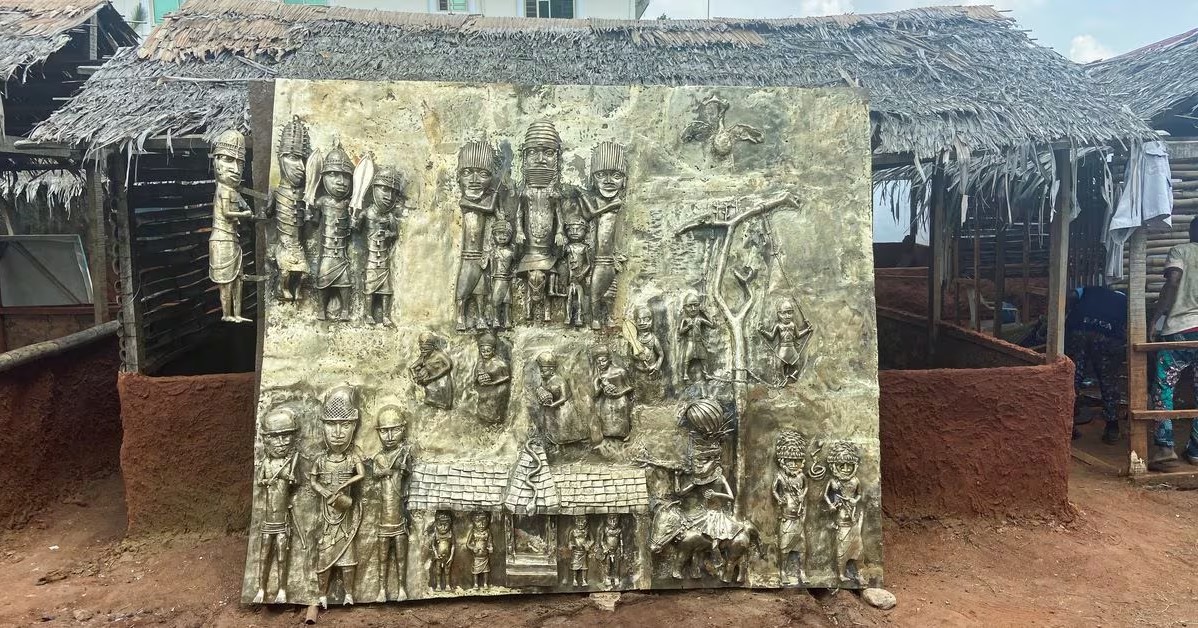
Location description
The plaque with the name “The Return of Ewuare I” measures two meters long by two meters wide and was forged using ancestral techniques used by the inhabitants of the Kingdom of Benin (1180-1897) to sculpt and shape a copper and zinc alloy through the lost wax technique. With a total weight of more than two tons, it is the largest known piece of the traditional Benin Bronzes, which currently continue to be produced. It depicts significant historical events that occurred in the Kingdom during the rule of Ewuare I, Oba (highest authority and leader) of the Kingdom between 1440 and 1473.
Towards the end of the 19th century, seven European colonial powers (Spain, Belgium, France, Germany, Italy, Portugal and the United Kingdom) overwhelmingly regulated in their favor the terms of colonization and trade in and with the nations of the African continent at the Berlin Conference (1884). Few of these African nations managed to retain a considerable degree of political and economic independence, among them the kingdom of Benin in present-day Nigeria. Ruled by the Oba (title equivalent to king) Ovonramwen Nọgbaisi (1888-1914), this kingdom monopolized trade in its territories, an activity coveted by the Royal Niger Company belonging to the British government. In 1892 the Oba and this company signed a free trade treaty that allowed greater power of action and influence to the British interests in the region, with the ultimate purpose of taking possession not only of the trade but of the territories themselves.
In November 1896, when disagreements arose in the implementation of the treaty and British merchants complained to their authorities, the colonial administration of the Protectorate of the Niger Coast sent a contingent of representatives to negotiate with the Oba of Benin. As the latter had refused to meet the British envoys, since the Igue festival was being celebrated at the time, their presence and insistence on Beninese territory was interpreted as a hostile act. With the exception of two survivors, the contingent of 18 British and approximately 240 African members of the “expedition” were killed. The attack thus served as justification for the “punitive expedition” that began on February 9, 1897.
Over the next ten days, British Royal Navy forces consisting of 1200 men divided into three columns began the invasion of Benin City, capital of the kingdom of the same name. Until the capture of the city and during the ten days it took the “expedition” to reach it, all towns and villages encountered along the way were massacred and burned. The main means of attack was by artillery and using bombs and rockets, killing not only the defense forces of the kingdom but the entire civilian population including women, the elderly and children.
On February 18, Benin City was finally captured and burned to the ground. The Oba Ovonramwen was deposed and exiled to the city of Calabar and replaced by a British resident administrator, while the local military chiefs were killed by the expeditionary forces. Eight members of the British forces were killed in action. The number of Beninese casualties is unknown but estimated in the tens of thousands. As an ultimate consequence of the “punitive expedition”, the British Empire occupied the territory of the Kingdom of Benin and integrated it into the Niger Coast Protectorate and later into colonial Nigeria. For some contemporary historians, the “expedition” was part of a series of coordinated actions, deployed at the same historical moment and referred to as retaliatory, with the real objective of advancing the imperialist cause and British economic interests on the African continent.
The sacred, ceremonial and governmental spaces were looted before being burned by the invaders, and the plunder was appropriated by the British troops. Official figures counted approximately 2,500 pieces among ceremonial and religious artifacts, musical instruments, figurines, ornaments, weapons, tools and objects of political, cultural and historical symbolism of the kingdom of Benin. Of these, almost half were sent by the Admiralty of the United Kingdom to the British Museum, while others were given to the members of the “expedition” as booty and the rest were auctioned to pay the costs of the invasion. These pieces, indispensable for the Kingdom of Benin and today’s Nigeria’s heritage and their visual and material culture, are collectively known today as the Benin Bronzes. Due to their appropriation and sale, they are currently scattered in more than 120 institutions in 19 countries, most of them art and ethnographic museums in Europe and North America.
Since the constitution of the Federal Republic of Nigeria in 1960, following the process of independence from the United Kingdom, various official bodies and Nigerian civil society organizations have been calling for the restitution of the Benin Bronzes from the Western institutions that count them among their possessions. With the decolonization processes’ development on the African continent, and later also of the different claims organized around the restitution of heritage obtained by force or illegally, progress was made in the articulation of the Nigerian state with civil society groups such as the Art Loss Register or the UNESCO restitution committee. In this regard, one of the most significant actions was the formation of the Benin Dialogue Group (BDG) in 2007. This multilateral, collaborative working group is composed of delegates from Western museums holding Beninese artifacts, representatives of the Nigerian government, the Royal Court of Benin, and the National Commission for Museums and Monuments. While the BDG has achieved some returns from the University of Aberdeen (Scotland), Jesus College, Cambridge (UK) and the Metropolitan Museum of Art (USA), progress has been modest according to the number of pieces and total holding institutions. These are estimated at 4880 objects held by 129 institutions outside Nigeria, according to the database of the Digital Benin project, launched by the BDG in 2020.
To complement through new and original ways the results obtained through diplomatic channels, international forums and even joint initiatives such as the BDG, a guild of Nigerian artists and artisans (the Ahiamwen Guild of Benin) developed a restitution proposal that consists of exchanging the looted objects for contemporary and new pieces made by themselves with the same techniques and ancestral materials as the “original” Benin Bronzes. Specifically, one of the pieces offered is the plaque “The Return of Eware I” to the British Museum in London. This institution has the largest number of these pieces in the world, reaching the number of 944. The vast majority of them were given to the Museum by the Admiralty of the United Kingdom immediately upon their return from the “punitive expedition” of 1897.
Members of the Ahiamwen Guild such as its founder and author of the plaque, artist Osarobo Zeickner-Okoro, maintain that the pieces on offer are fully linked to those looted by the simple fact that the communities of the Edo ethnic group originating from the ancestral Kingdom of Benin never stopped making them, before, during and after the plundering they suffered. The permanence of the techniques, traditions and materials used implies, for these artists and the community they represent, that the criminal acts associated with the colonial past continue to extend their consequences in the present by portraying their civilization as dead and closed in the past. In making the contemporary bronzes, the communities highlight the re-actualization of the trauma they suffered and its contemporary relevance. This fact is also underlined by the organization of the artists who make the objects in guilds such as the Ahiamwen: this was the organizational form that the artisans had in the ancient Kingdom of Benin, with the explicit indication by the Oba (equivalent to a king) to preserve the history and the events that occurred in the kingdom and in the court, functioning as an instance of cultural memory. The very name of the contemporary guild, Ahiamwen, means “bird” in the Edo language and refers to the “bird’s eye view” needed to approach Beninese history as a whole.
In this way, the Ahiamwen Guild attempts to change the terms of the debate by pointing out that not only human lives, land and resources were part of the plunder of the “punitive expedition”, but also the heritage, history and culture of a people who, in order to recognize themselves and continue their traditions, are forced to resort to reproductions of foreign institutions. On the other hand, the artists recognize that the exchange proposal is conceptually and symbolically significant but with little concrete likelihood that its terms will be accepted. However, the purpose is for the British Museum to at least acknowledge the modern culture of the Kingdom of Benin, its vitality and its link to the past by incorporating the new bronzes among its holdings.
In 2018, the British Museum officially communicated that the question of accepting the offer and carrying out the exchange is a discussion that will only take place between the institution and the Guild, although it considers it a generous and interesting proposal. The museum also stated that its director, Hartwig Fischer, had an audience with the Oba of Benin in 2018 that “included discussion of new opportunities for sharing and displaying objects from the Kingdom of Benin.”
Three years later Zeickner-Okoro declared, after meeting with two curators from the Museum’s Africa Department, that the institution had accepted his donation and expressed interest in acquiring several works by other Guild artists. However, following these statements, a spokesperson for the Museum acknowledged the meeting with the Director of the Ahiamwen Guild and said that “at this time there has been no formal discussion of acquiring these objects for the collection,” further ruling out the possibility of an exchange.

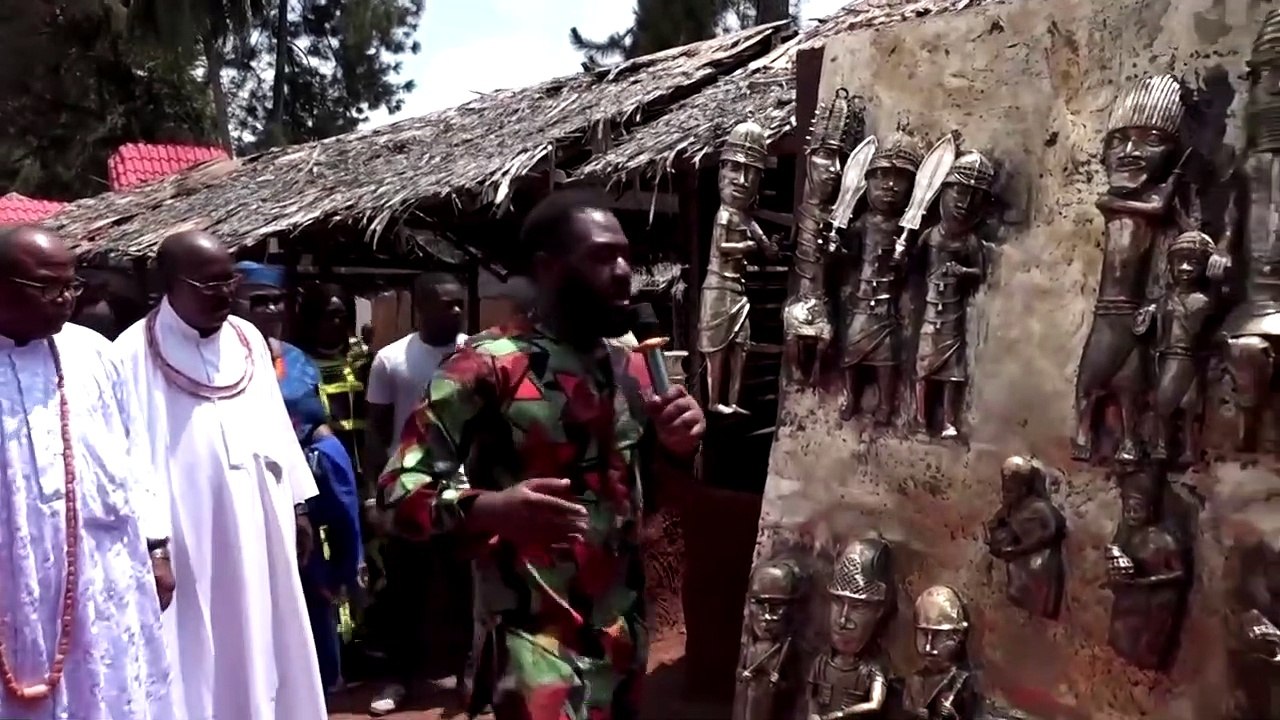
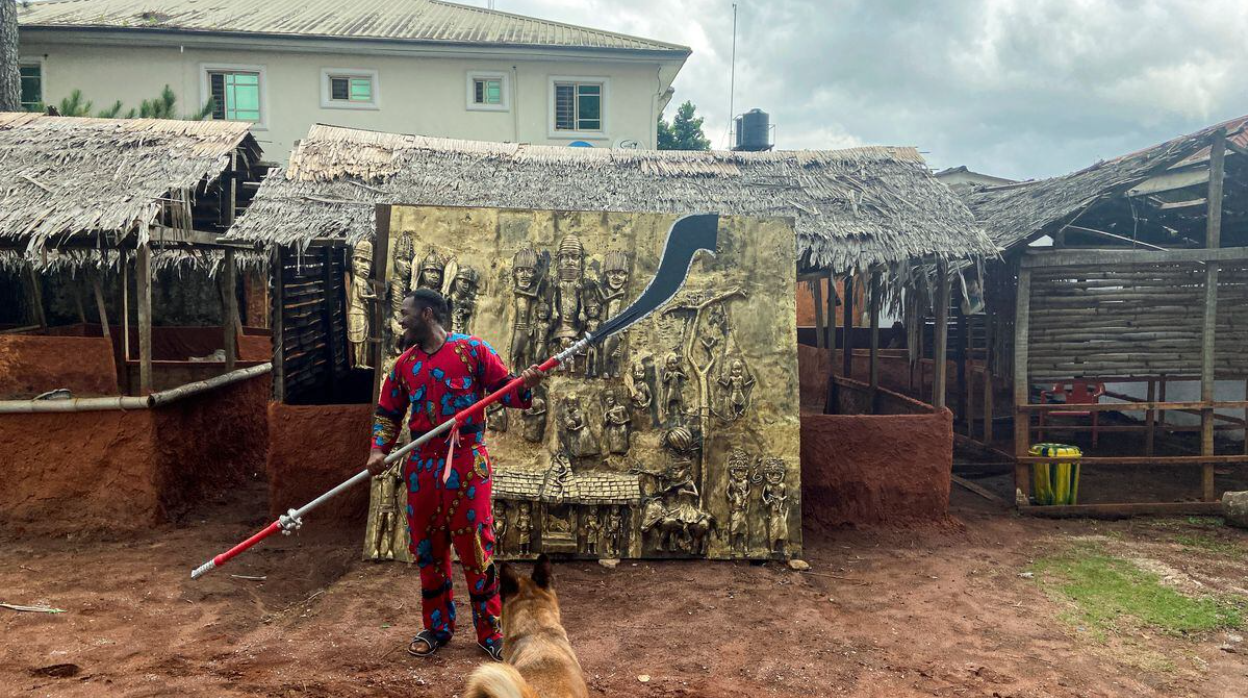
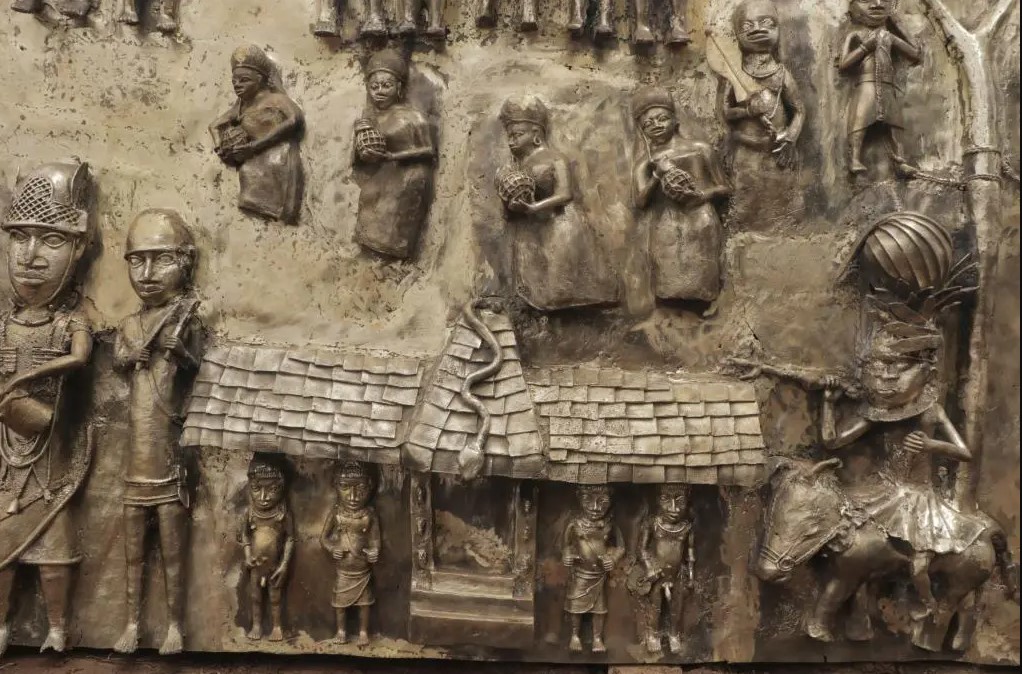
Links of interest
Nigerian Contemporary Art is Being Offered in Exchange for the U.K. Benin Bronzes
Benin Bronzes Should Be Returned—What Stands in the Way | Observer
Nigerians offer artworks to British Museum in new take on looted bronzes | Reuters
Nigerian artist says British Museum accepts his gift, keeps looted bronzes | Reuters
Stolen treasures | New Internationalist
'We'll take your new Benin Bronzes - but won't return the looted ones'
Interview of Ahiamwen Guild Director Lukas Zeickner-Okoro
Nigerian Artists Propose New Art to the British Museum in Exchange for the Benin Bronzes
British Museum accepts Nigerian artist's gift but keeps looted bronzes | Entertainment
